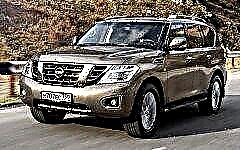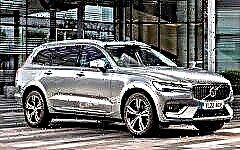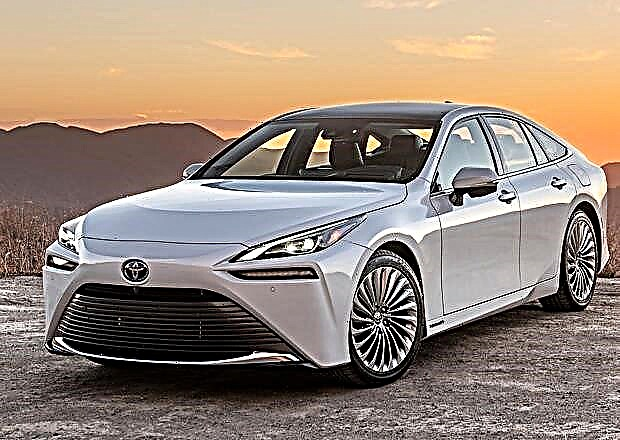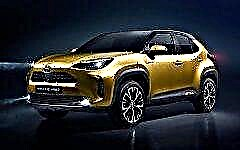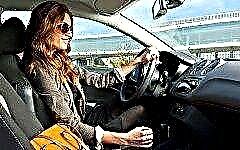

The content of the article:
- Driver problems in poor lighting
- Choosing antifar glasses - we start with a visit to the ophthalmologist
- Lens material
- UV protection
- Polarization of glasses
- Tinting
- Light transmission
- Gradient tinting
- Choice of frames
- Scratch protection
- Guarantee
Night driving is popular with many motorists. But, unfortunately, driving in the dark has its drawbacks, and the main one is visibility problems. Low light levels and blinding headlights of oncoming cars cause a lot of anxiety to the driver, and can even contribute to an emergency on the road.
Fortunately, there are special goggles for night driving - anti-headlamp goggles. How to choose the right accessory to make night driving more comfortable?
Driver problems in poor lighting

Low light and the need to constantly strain your eyes to peer into the road leads to rapid eye fatigue. The constant flickering of road lights, shop windows, glare of the wet road surface and the blinding light of oncoming headlights only aggravate the situation.
After the first hour of driving on a poorly lit road, the driver has a feeling of fatigue, pain in the eyes, a feeling of "sand" may appear. Fatigue of vision inevitably leads to general fatigue, decreased attention and reduced reaction speed to constantly changing traffic conditions.
Anti-headlamp goggles are specially designed to eliminate as much as possible all the negative manifestations of low light levels. But in order to choose the right accessory for yourself, you should understand the types of glasses for a motorist.
Today there are a number of models for driving at twilight and at night, and each of them has its own characteristics and can be used under certain conditions.
Choosing antifar glasses - we start with a visit to the ophthalmologist

A trip to the store for "anti-headlights" is best preceded by a visit to an ophthalmologist. Often, poor visibility at night and twilight is due not only to objective natural conditions, but also to individual characteristics of vision. Therefore, it is worth starting the selection of glasses with diagnostics.
According to statistics, drivers with one hundred percent vision do not experience an urgent need for anti-headlights. But the "shrunken" vision will certainly cause the desire to acquire protection for the eyes.
If the check shows that the driver's vision is not in perfect condition, it may be necessary to purchase protective driving glasses with diopters. Thus, a timely visit to a doctor will not only save health, but also save money.
Lens material
The case of driver's glasses is perhaps the only one in which recommendations for the choice of lens material go against the advice of ophthalmologists.
Traditionally, the best eyeglass lenses are thought to be made from glass. This is really so: glass is the most transparent material that perfectly transmits light fluxes. But in the event of an accident and a collision with an airbag, glass lenses are guaranteed to shatter into many fragments and inevitably injure the driver's face.
The result is, at best, cuts on the face, at worst, eye trauma. That's why for driving it is better to choose glasses with plastic lenses.
UV protection
When choosing antifar glasses, you should pay attention to the marking "100% UV-Protection". This mark indicates that these lenses provide 100% UV protection.
Glass polarization

A prerequisite for glasses for driving a car is polarized lenses. Glass polarization eliminates glare from windshield, wet road surfaces and other cars on the road.
The polarization of the glasses does not affect visual acuity, but with such glasses the driver has reliable protection against glare: the retina of the eye does not suffer from burns, and after being blinded by oncoming headlights, the eyes quickly return to normal.
You can check the polarization of the lenses in two ways:
- Using a cell phone. If you look at a phone display through a lens and then rotate it 90 degrees, the display seen through the lens should darken.
- Using the second similar glasses. If you look through two lenses and then rotate one of them 90 degrees, the image should darken. The more intensely the visible image darkens, the more intense the protection of polarized glass.
The undoubted advantage of polarized glasses for driving at night is that they do not obscure colors, remaining transparent to the entire visible spectrum.
When it comes to polarizing lenses, it’s worth dispelling one common myth that such lenses supposedly improve the quality of vision. This is not true. Polarized lenses do not affect visual acuity in any way, for this there are lenses with diopters. By the way, if the driver's vision needs to be corrected, it is always possible to order polarized lenses with diopters - this will solve two problems at once, correcting visual acuity and saving the driver from glare on the road.
Tinting

Modern anti-headlights are available in different tints:
- yellow;
- brown;
- blue;
- red.
Initially, manufacturers offered motorists glasses with tinted yellow lenses. Their purpose is to cut off the blue color spectrum, thereby making the "picture" more contrasting, as well as reducing the degree of glare from oncoming headlights.
Tinted yellow lenses are still popular with drivers because they are very good at dampening the headlights of oncoming vehicles. But such glasses are not suitable for driving at night: when it is completely dark outside, the yellow tint will "eat up" the already meager outlines of objects. According to ophthalmologists, yellow and orange colors maximally change color perception, cutting off the blue part of the color spectrum visible to humans, which is the basis for normal orientation at night. The use of yellow "anti-headlights" at night may not make it easier, but, on the contrary, aggravate the driver's position.
Antifaras with yellow lenses are successfully used mainly at dusk. They also proved to be good in foggy or rainy weather, when the cut-off of the blue spectrum does not have such a detrimental effect on the overall "picture" in front of the driver's eyes, but, on the contrary, increase the clarity of perception and contrast of the "picture".
As for the brown tint, it is certainly not as intense in the night driving glasses as in the case of the sun glasses. This tinting is distinguished by the fact that it significantly increases the comfort of vision. Brown lenses allow you to see colors with minimal distortion. They are better suited for night driving, when contrast is important, on the one hand, and the dimness of light from oncoming traffic, on the other.
Other shades can also be used in driving glasses. It is advised to choose the color of toning depending on personal preference. At the same time, do not forget that at night the best tinting is its absence, since any tinting coating inevitably conceals the already meager light illumination.
Modern manufacturers offer drivers glasses with interchangeable lenses. Such models actually allow the use of several types of "anti-headlights", depending on the conditions in which the driver is driving.
Antifares with interchangeable lenses are more expensive than regular glasses, but if a car enthusiast wants to buy several types of glasses for different driving conditions, some good glasses with interchangeable lenses will end up costing less than a few high-quality glasses.
Light transmission

For driving glasses, an indicator such as light transmission is extremely important. If the glasses are completely transparent, they will not dim the light of oncoming headlights and will not allow the eye to adapt in time. But you cannot use heavily tinted glasses either - the driver will not see well in them at dusk.
There is an international ISO standard, according to which the light transmission of lenses for driving glasses must be greater than or equal to 75% of the transmission of the visible color spectrum. This characteristic must be indicated by the manufacturer in the accompanying documentation for the glasses.
Gradient tinting
Not the most critical, but convenient option is the gradient spray of tinting. In the upper part of the glasses can be mirrored, and in the lower part - almost transparent. This provides glare protection while not obstructing the view of the vehicle's dashboard.
Choice of frames

As in the case of the selection of ordinary glasses, the frame should be chosen in such a way that it does not press on the temples and the bridge of the nose, and is light enough. But there are other criteria as well.
Of the 120 degrees of human vision, 90 degrees falls on central vision, and thirty - a considerable proportion - on peripheral vision. It should be remembered that at high vehicle speeds, the driver's angle of view narrows to 50 degrees, and peripheral vision accounts for a larger percentage of the total available angle.
Based on this, anti-headlamp glasses are better to choose with narrow temples, which minimally obstruct the side view... The less the driver has to turn his head, distracting from the road in order to see something in the peripheral vision, the safer his movement in the traffic will be.
High-quality glasses for drivers have a field of vision of 130-140 degrees. You should also pay attention to the models without side arms - they greatly facilitate lateral visibility.
Scratch protection
When purchasing glasses for driving, you should choose models that have a protective coating that protects the lenses from minor scratches and damage. Even if you store glasses according to all the rules, in a case, the constant movement of the car provokes the appearance of abrasions on the lenses. Anti-scratch protection will keep the anti-headlights longer.
Guarantee
When choosing glasses for driving, you should pay attention to the manufacturer's warranty. Quality glasses usually come with a minimum two-year warranty. If these are glasses with interchangeable lenses, the lenses themselves will be warranted for two years, and for the nylon frames - five years.
A general recommendation for those looking to buy driving glasses is the advice - beware of fakes! Whatever glasses you choose, the main thing is their quality and full compliance with the characteristics stated in the accompanying documentation.
[media = https: //youtu.be/Uy2FF-I1-PY]


